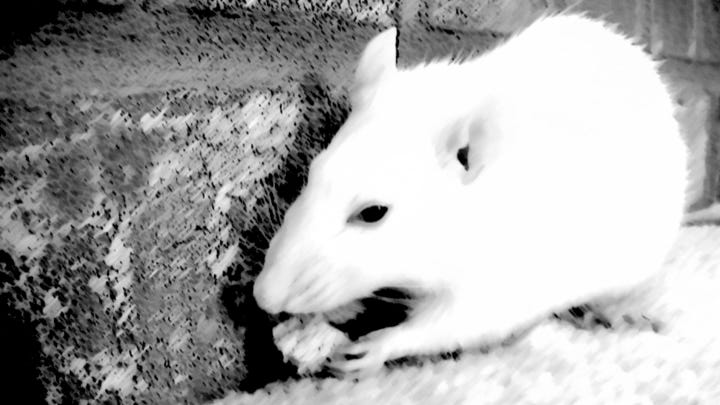Culture eats strategy for breakfast — Peter Drucker
It takes time to develop a culture, good or bad.
It takes time to unravel an undesirable culture and to embed a more healthy, productive one.
Leaders need to nurture those who can create a desirable culture or the culture will eat them for breakfast too.
Monkeys and Culture
In 1967 a group of scientists placed five monkeys in a cage. In the middle of this cage stood a stepladder with a bunch of bananas on top.
Every time a monkey climbed the ladder to get the bananas, the scientists hosed down the rest of the monkeys with ice cold water.
After a while, whenever a monkey would venture up the ladder, the other monkeys would pull it down and beat that monkey to avoid being hosed.
In time, no monkey would dare to climb the ladder at all.
The scientists went on to replace one of the monkeys with a new one. As you would expect, not knowing what went on before, the first thing the new monkey did was to climb the ladder. Seeing this, the others pulled him down and beat him up before they were hosed.
Every time this same new monkey tried to climb the ladder, he was beaten up.
Soon the new monkey never tried to go up the ladder, he simply gave up.
The experiment continued…
Next, a second monkey was substituted and the exact same behaviour was observed. However, this time the previously new monkey joined in the beating up of the new second monkey!
This pattern continued as a third, fourth and fifth new monkey was introduced.
In the end, there were five new monkeys. None of these new monkeys had ever received a cold hosing down. However, they would still beat up any monkey who dared to climb the ladder.
(This story is inspired by this 1967 research conducted by psychologist G.R. Stephenson).
The longer you leave it the worse it gets
As you can imagine if you let the monkey, step ladder, banana mindset fester for too long it becomes very hard to change the behaviour.
Essentially, the organisational culture becomes fossilised.
Just as this culture was embedded gradually, it must also be removed gradually in one of two ways.
Using a gradual change technique. This technique employs cross-divisional collaborative initiatives, external collaboration and partnerships as well as other outside-in innovation strategies.
You might also seek consultation with specialists like the excellent Flow Group, who focus on cultural change (CEO and founder Ian McClean is an upcoming guest on The Innovation Show).
The second option can be a rather expensive one.
Here you need to change the old monkeys for a brand new set of monkeys.
The new breed will portray a different mindset. This breed will work on a new business operating system (bOS).
Again, this would need to be introduced slowly. Hiring too quick can be equally detrimental.
We tried that already!
As an innovator, change-maker or challenger of the status quo you will hear this phrase quite a lot.
You must always challenge this phrase.
“We tried that already”, should only count if it has been tried in the last 6–12 months.
Business models are being disrupted frequently. Previously explored initiatives may well have been tried, but may have failed for a plethora of reasons. These reasons include the wrong team leading a project, too early to market and poor deployment.
A message to the change-maker, always reach for the banana and always take a shot on goal, even when you are told it was tried before.
Be aware that you will need the support of senior leadership to succeed.
Business Leaders (and parents): Lick your Rats!

I first read about Neuroscientist Michael Meaney in Paul Toughs excellent book ‘How Children Succeed’. Meaney used rats to demonstrate how parental grooming has a profound effect on curiosity and the confidence to navigate society.
A brief synopsis goes like this. When working with rats scientists handle them frequently. While handling rats Meaney’s team discovered a consistent pattern. When they dropped baby rats some mothers would run to lick and groom their babies to console them and other mothers would not.
Handling the rats caused them anxiety and they released stress hormones. When mothers licked their babies this counteracted the stress hormones.
The team monitored every instance of licking and grooming. After ten days, they divided the rats into two groups: those which licked and groomed a lot and those which did so only a little.
After one hundred days, when the rats fully matured, they were subjected to a series of tests.
Some tests stood out.
The “open-field” test is where rats were put in a large box to see how they might explore an area during a 5 minute period. Rats which were licked a lot explored confidently. They roamed around the box for up to thirty five seconds. In contrast, the other low lick group lacked confidence and only spent a few seconds exploring the box.
In the “fearfulness” test, hungry rats were put in another box and offered food over a 10 minute period. Once again, the well cared for rats started eating after only four minutes and ate for longer. It took the less-maintained rats nine minutes to eat and they only ate for a very short period of time.
Overall, the well groomed rats were more social, more curious, less aggressive, healthier and lived longer.
Lessons for Business Leaders
It struck me that these rat studies highlight the need for nurturing in business to encourage cultural change.
Business leaders need to watch over and “angel” change makers in their organisations.
Senior leader sponsorship is crucial for an innovation programme of any ambition to succeed.
If the CEO or senior leaders nurture the innovators (I call them positive vampires), they will feel confident enough to “explore” more, just like the rats who were shown more motherly affection.
The innovators will live even more on the edge and will venture far enough where they may just discover a breakthrough.
This exploration and working on a new business operating system (bOS) is where the magic can happen.
The innovators need to feel “protected”, as they venture outside the comfort zone of the culture, as they reach for the banana and beyond.
As we explored in a previous Thursday Thought, there will be snakes in the grass awaiting the innovators as they continually threaten the status quo.
As an innovator you need senior leadership to be mowing the lawn and clearing the way for you behind the scenes. Without this you and the innovation programme will ultimately fail.
Rat and Monkey Business
As a senior leader, CEO or MD, you will have already recognised the need for change in your company.
You have hired the right people, you have launched an innovation programme and you have dedicated budget to this programme.
That was the easy part.
Even before you can aspire for your innovation programme to succeed, you must lay the cultural foundation.
To do this you must evaluate your organisational appetite for change and innovation.
Do the monkeys beat up those who strive for the bananas?
Do your senior leaders hose down the monkeys if they try?
Does your staff stifle innovation? Do they restrict change?
Once your company is on a path towards (acceptance of) innovation, this is where the change-maker comes into her own.
You, the leader, have mowed the lawn. Now the innovator can start implementing a new business operating system (bOS).
Is it fluff, does it work? Ask Adidas.
Within one year, the Adidas share price is up an astonishing 250%.
Adidas recognised its bureaucratic and stale management systems and removed an entire level of management.
According to Global Chief Marketing Officer, Eric Liedtke, Adidas had grown into a big complex company built around internal processes and not the customer.
Among many initiatives employees were rewarded for coming up with ideas. They received bonus points when they collaborated cross silo.
“We knew we needed to build a culture of people that help and ask for help. A culture of people who are confident to take some risks,” said Liedtke.
I rest my case.
Next week we will look at some initial steps you can make to facilitate innovation and creativity.
